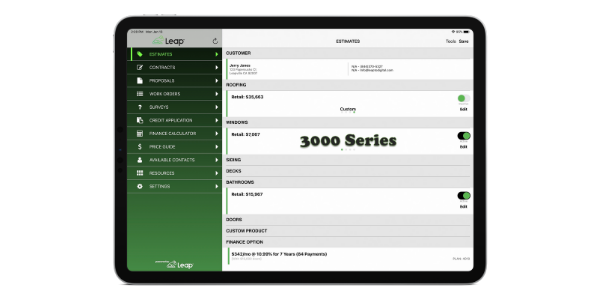How employing data analytics keeps sales teams relevant in the digital age

By Ingage.
Through leveraging data insights, sales teams can build a stronger customer base.
Historically, the sales team has released their company’s information about products and services to the buyer, they acted as a translator and go-between. But in the age of the internet, that information is now in the buyer’s hands, making the sales field much more competitive. But the internet has not just created a new challenge for sales teams, it has also heralded a new tool for them — data analytics.
Ultimately, closing sales hinges on the team’s ability to find a solution to a customer’s problem. It has always been true that the better the sales team knows the customer and their problems, the better they are at selling to them. With the data analytics available in the internet age, sales teams can now customize pitches and offerings to directly address a customer’s concerns. To learn how to leverage data analytics and increase revenue from closing sales, check out the following overview put together by Ingage.
The data explosion: Pros and cons in sales management
Modern sales management teams need serious balancing skills. Keeping your team members on a short leash can lead to cries of helicopter management. But letting your sales team run wild often means losing responsibility and accountability.
When coaching team members, sales managers can’t issue general statements or rely on anecdotal information to provide directions. Whether talking about team goals or an individual’s sales performance, they need hard facts to support their statements. Without real-time data in their hands, businesses won’t be in a position to adapt to changing markets in a timely manner.
A data-driven approach also helps businesses avoid common mistakes and misguided assumptions. When business decisions stem from insights generated from data and advanced analytics, they’re more in tune with current market conditions. As a result, companies are better-positioned to capitalize on new business opportunities, pounce on new markets and provide timely and responsive customer service.
Pros of big data for sales teams
Sales teams can especially benefit from Big Data. An analysis of everything from sales field activities to customer complaints can help refine sales processes to better serve customers.
Any sales management team can spout their company’s sales revenue, average sales per rep, average deal size and even customer lifetime value. However, tying all these variables together can unlock never-before-seen insights.
For instance, your team might be producing enough sales to hit their targets, but they seem to spend more per customer and take too much time closing deals. Conversely, your sellers with the lowest sales per customer also close deals faster and more often. With every new piece of information, your sales management team can react and adapt accordingly. This allows them to reposition their sales team to close deals more efficiently.
How big data impacts sales management strategies
Using analytics to define your sales team’s direction also provides the following benefits:
- Lower operating costs: An efficient operation means lower costs. Instead of deploying sales teams to random areas with the hope of acquiring new customers, analytics can identify potential growth areas that can yield better results. Eliminating hit-or-miss forays in favor of targeted operations can dramatically reduce costs while increasing revenues.
- Better customer service: Analytics can sift through mountains of customer data to gain insights about the product and the level of service received. Sales and customer service can then pick up the finer points of dealing with individual customers, which can lead to better service. Analytics can even show the maximum threshold where customers will patiently wait for a reply or the highest price they’re willing to pay.
- Better sales rep evaluation: Analytics allows sales management to look at their sales representatives in more detail. For instance, when reviewing employees, sales management can share actual performance numbers. Or when considering candidates for higher positions, predictive analytics helps identify future leaders using absolute metrics such as sales performance numbers, client retention rates and customer service feedback.
Challenges of handling high volumes of data
With the benefits come the challenges, and analytics is no exception. A major part of using analytics is understanding the data that feeds it. However, getting the entire organization to buy in could pose a challenge. Employees tasked with the proper collection, storage and transmission of data might be remiss in their duties. As a result, data used in insights may be incomplete or disorganized.
Lack of data integration can also be a problem. Data can come from various sources. But social media feedback, customer relationship management (CRM) software data, employee logs and customer service reports all have different formatting. And consolidating all the various formats to come up with a single report can be more complicated than expected.
In addition, analytics can tell a very detailed story. However, it often fails to explore the individual nuances of customers. Data comes from human buyers, and much of it is derived from surveys. In some cases, limited survey answer choices may not accurately reflect a customer’s sentiment.
Data may also be skewed based on the number of respondents. For example, customers in favor of a product might respond positively to a survey, while those who dislike or are neutral about it might not even bother submitting their replies.
Finally, handling data requires you to respect individual rights to privacy. Improper collecting, handling and processing of information that circumvents applicable privacy laws can lead to major legal and regulatory repercussions. Companies should ensure that their data analytics activities always remain within local guidelines.
Benefits of data-driven sales management decisions
Despite the drawbacks, the benefits of data-driven sales decisions are too valuable to ignore. The trick is in extracting the relevant and accurate insights that can help move a company forward in terms of increased sales and better customer relationships. Specifically, analytics can provide a host of benefits that can help organizations achieve their goals faster and more efficiently, including:
1 - Empowering informed choices
Answering a tough question is easy as long as you don’t have to provide the accompanying details. Analytics removes the guesswork from decision-making by providing hard data on everything from sales performance to customer feedback.
Whether they’re presenting performance results to sales representatives or discussing results with sales management, leaders have accurate information backing up their claims and recommendations. Meanwhile, decision-makers have the requisite data needed to make an informed decision. This reduces any chances of sales management taking a majority vote or having a leader rely on personal instincts to come up with a decision.
2 - Understanding customers better
Customer feedback can be as varied as the customer base itself. Acting on a single, vocal reaction instead of focusing on the collective wisdom can prove fatal to sales improvement efforts.
Analytics provides a clearer picture without focusing on anecdotal reports or loud minorities. Instead, hard numbers will provide a better picture of the real customer sentiment about your products and services. This is the essence of really understanding what customers want.
3 - Optimizing sales performance
Coaching individual sales representatives to move customers through the sales pipeline more effectively becomes easier with analytics as well. Sales management can pull data from a sales rep’s recent performance and show which areas are doing well and which ones need improvement. This can include optimizing field sales routes to cover more ground, increasing client face time over administrative tasks and reducing average conversion rates to improve win rates.
Driving sales success with data analytics
Data analytics can produce powerful insights that look into market trends and changing consumer behavior patterns. By giving sales management a real-time heads-up about ongoing market conditions, leaders are better prepared to make timely and informed decisions that can boost their sales representatives’ performance.
Identifying marketing trends
Instead of working with separate data silos, the right analytics system can gather the needed information and consolidate it into applicable and actionable insights. For example, data from warehouse systems can provide sales teams with the needed inventory data to prevent selling out-of-stock items. It also allows sales teams to identify push items that they can offer customers for upsell or cross-sell opportunities.
What’s more, analytics can help you identify current market conditions. The insights provide real-time advice on adjusting prices and inventory to help sales keep up with trends. Additionally, analytics from customer service can advise sales teams to focus on specific benefits such as functionality instead of spending too much time discussing the price. This can help sales reps get back on track in delivering more closed deals faster.
Targeted advertising for sales success
Creating a campaign that targets your entire customer base is often too simplistic. To maximize success, sales management should create the right campaign, aim it at the right audience and launch it at the right time.
Target marketing uses analytics data to identify various customer segments based on demographics and preferences. It also notes the outlying behavior of customers from each segment to give the sales team opportunities to tailor personalized campaigns.
Sales forecasting and pipeline management
Using Big Data allows sellers to pivot quickly on matters of pricing and availability. If a company can identify trends earlier than its competitors, it can better anticipate demand and implement pricing strategies. Analytics can also identify markets where demand is growing and advise on sectors where consumption rates are falling. As a result, companies can focus their resources on growth areas and scale back on declining ones.
Analytics also enables sales management to determine more accurate sales forecasts based on current market trends. It pinpoints bottlenecks in the various stages of the sales pipelines and generates insights on how to unclog them. It can also help you identify the specific sales tools your team needs to be more successful.
For example, Big Data can determine that conversions are taking more time than necessary. The resulting insights propose a reduction in the time spent selling by addressing common objections earlier instead of later.
Customer segmentation strategies
Analytics also allows you to create a more detailed profile of customers. Rather than simply tracking customers with their names, customer numbers and contact information, you can incorporate sales and customer service metrics. This expanded profile enables you to segment customers better, which is a prerequisite to personalized services.
For example, a lack of segmentation during the qualifying and proposal stages can lead to sales reps sending a generic message that fails to resonate with one or all segments. But by segmenting customers based on demographics, market behavior or spending habits, sales management can issue the directive to develop personalized messages for each segment that play on their needs. This puts your company in line with the type of sales culture that many young salespeople want — and today’s customers respond to.
Share sales management insights in an interactive presentation
Whatever data gets collected and sifted to create actionable insights; sales management teams will need the right presentation software to present their findings. Relying on static presentations that only provide a linear storytelling direction aren’t enough.
Ingage is cloud-based interactive presentation software that helps you paint the complete picture. Its interactive features let users expand sections with the click of a button. Depending on how you want to present your story, Ingage can go with your flow direction-wise. In addition, its cloud collaboration capabilities enable entire sales teams to huddle up remotely and work on the same presentation.
When sharing the finished presentation with the client, there’s no need to upload or download the entire file. Instead, Ingage lets you send the presentation with a single link. Built-in analytics track your customer’s reactions to each section of your presentation. It then reports back and tells you which areas captured their attention and which areas need further improvement.
Don’t let your presentation software limit your ability to tell your full analytics story. With more than 100,000 presentations created every month, Ingage can turn your sales insights into a compelling story that gets the job done.
Original article source: Ingage
Learn more about Ingage in their Coffee Shop Directory or visit www.ingage.io.






















Comments
Leave a Reply
Have an account? Login to leave a comment!
Sign In